How to Rest Without Feeling Lazy
Introduction
Reclaiming Rest as a Vital Act of Self-Respect, Not Self-Indulgence
In a culture obsessed with hustle, rest can feel like rebellion.
We live in a world that measures worth in output, applauds busyness, and views exhaustion as a badge of honor. Taking a nap, logging off early, or doing nothing for a while can stir up deep-seated guilt—especially for those who identify as high achievers, people-pleasers, or caregivers.
But here’s the truth: Rest is not laziness. It’s not weakness. And it’s definitely not failure.
Rest is the foundation of resilience. It’s how we restore clarity, regulate our emotions, repair our bodies, and reconnect to ourselves. In this article, we’ll explore how to shift your mindset around rest, unpack the shame tied to doing “nothing,” and learn how to give yourself permission to pause—without apology.
Want to try Online therapy? Click here.
🧠 Why Rest Feels So Hard
Let’s start with an honest question:
Why do so many of us feel guilty when we rest?
The answer is layered and often tied to culture, upbringing, and personal identity. Here are some common roots:
Productivity culture: We’ve been conditioned to believe our value comes from what we produce.
Internalized capitalism: The idea that time is money and every moment should be optimized.
Childhood programming: Maybe you were only praised when you were achieving.
People-pleasing habits: You fear being seen as unreliable or lazy.
Perfectionism: Rest doesn’t feel “earned” unless you’ve done everything else.
For many, especially women, rest can feel like a privilege instead of a right. And for those with chronic illness, neurodivergence, or mental health struggles, the need to rest more than others can feel like a personal failing rather than a biological reality.
It’s time to rewrite that story.
💡 The Difference Between Laziness and Restoration

Let’s clear up a major misconception:
Rest is not the same thing as laziness.
- Laziness is often described as an unwillingness to act even when you have the energy to do so.
- Rest, on the other hand, is a necessary pause—a conscious decision to replenish energy that has already been spent.
In reality, very few people are truly lazy. What we often label as “lazy” is actually:
- Burnout
- Depression
- Chronic fatigue
- Decision paralysis
- Overstimulation
- Grief
- Executive dysfunction
Resting in these states is not indulgent—it’s intelligent. It’s how you move through the fog instead of forcing yourself to sprint in it.
🔄 Reframing Rest as Productivity
Here’s a radical idea:
Rest is productive.
Not in the “so you can do more later” way. But in the way that rest itself does something:
- It calms your nervous system.
- It integrates what you’ve learned.
- It heals your body.
- It creates space for creativity and insight.
- It makes you more emotionally available and less reactive.
When you rest, you’re not checking out. You’re checking in.
🌿 Types of Rest You Might Be Missing
We often think of rest as sleep or lying on the couch. But true restoration happens in many forms. Dr. Saundra Dalton-Smith outlines seven types of rest:
Physical rest: Sleep, naps, gentle movement, stretching.
Mental rest: Taking breaks from decision-making, overthinking, planning.
Sensory rest: Turning off notifications, reducing noise, avoiding screens.
Creative rest: Letting your brain wander, spending time in nature.
Emotional rest: Expressing feelings without filtering or fixing.
Social rest: Spending time with those who don’t drain you—or being alone.
Spiritual rest: Time for reflection, meditation, or a sense of meaning.
If you’re still exhausted after sleeping, you might not be lazy—you might just need a different kind of rest.
🚫 Busting Rest Guilt: Common Thoughts, Reframed
Here are some of the sneaky guilt-trips we give ourselves—and how to respond:
“I haven’t earned a break.”
→ You don’t have to earn rest. Your body and brain are not machines.
“Other people have it harder.”
→ Compassion isn’t a competition. Your need is valid.
“I’m falling behind.”
→ There’s no prize for pushing through pain. Your well-being is the real goal.
“I’m wasting time.”
→ Rest is not wasteful. It’s how you preserve your time and energy in the long run.
Every time you challenge these beliefs, you build a more compassionate inner dialogue.
🧘 How to Practice Guilt-Free Rest (Even When It’s Hard)
Resting without guilt takes practice—especially if your nervous system is used to go-go-go mode. Here are some ways to start integrating it more gently:
1. Start Small
Try five minutes of intentional rest: lying down, closing your eyes, deep breathing. Work your way up.
2. Name It Out Loud
Saying “I’m choosing to rest now” gives your brain permission. Labeling it helps override guilt.
3. Schedule Rest Like a Priority
Put it on your calendar as non-negotiable. Treat it like a meeting with your future self.
4. Set Boundaries Around Energy Drains
Protect your rest by saying no to things that don’t serve you—even if others don’t understand.
5. Tune Into Your Body
Your body often knows when it’s time to rest before your brain does. Notice tension, fatigue, or fogginess.
6. Make Rest Pleasurable, Not Passive
Rest doesn’t have to be zoning out. It can include rituals like:
- Tea and music
- Weighted blankets
- Warm baths
- Journaling or breathwork
Let it feel nourishing, not just necessary.
🛏️ Rest for People with Chronic Illness or Fatigue
If you live with chronic illness, multiple sclerosis (MS), fibromyalgia, or other fatigue-inducing conditions, rest becomes your lifeline.
But you may feel especially judged or misunderstood when you need to lie down “again.” The world often expects disabled or chronically ill people to prove their fatigue.
Know this:
- You don’t have to explain your rest.
- You don’t need visible symptoms to deserve downtime.
- You are not lazy—you are listening to your body’s limits.
In fact, planned rest (sometimes called “preemptive rest” or “pacing”) is a powerful way to prevent flares or crashes. You don’t have to wait until you collapse to slow down.
🌀 Trauma and the Fear of Slowing Down

For some, rest triggers anxiety. Stillness feels unsafe. This is common in people with trauma, especially childhood trauma where “doing nothing” may have been punished or dangerous.
You might notice:
- Racing thoughts when you try to nap
- Shame or guilt when you cancel plans
- A compulsion to fill every moment
This is not your fault. Your nervous system is wired to associate rest with risk. In these cases, rest must be reintroduced gently, with support and somatic tools like grounding, tapping, or therapy.
Resting is not “doing nothing.” It’s doing something radical: healing.
🧱 Build a Culture of Rest (At Home and Beyond)
If you’re trying to rest in a culture that worships burnout, you’re going to need a strong support system.
Here are ways to shift the energy around you:
- Model rest proudly: Talk about it as a strength, not a weakness.
- Encourage breaks in your workplace or family: Advocate for rhythms, not just results.
- Celebrate energy-awareness in friends: Applaud them for setting boundaries, canceling when needed, or slowing down.
- De-center the productivity narrative: Start conversations about joy, creativity, and sustainability.
The more we normalize rest, the less alone we feel when we choose it.
🪞Final Thoughts: You Are Still Enough, Even at Rest
Here’s what rest does not take away from you:
- Your value
- Your drive
- Your intelligence
- Your purpose
- Your strength
And here’s what it does give you:
- A clearer mind
- A calmer heart
- A resilient body
- A deeper connection to yourself
- The capacity to keep going without breaking
You are not a machine. You are a living, breathing human being.
Want to try Online therapy? Click here.
🧠 Reference & Recommended Reading
Dalton-Smith, S. (2017). Sacred Rest: Recover Your Life, Renew Your Energy, Restore Your Sanity.
Brown, B. (2010). The Gifts of Imperfection.
Hooks, B. (1999). All About Love: New Visions.
Maté, G. (2022). The Myth of Normal.
Tricia Hersey (2022). Rest is Resistance: A Manifesto.
You are allowed to pause.
You are allowed to unplug.
You are allowed to rest—without earning it, justifying it, or apologizing for it.
Related Posts
-
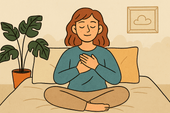
Learning to Feel Safe in Your Body Again
If your body no longer feels like a safe place—due to trauma, chronic illness, or anxiety—you’re not alone. This guide offers gentle, body-based strategies to help you reconnect with yourself, regulate your nervous system, and rebuild trust in your physical experience.
-
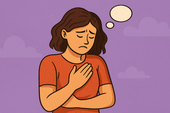
When You Feel Emotionally Unlovable: Challenging the Lie
Feeling unlovable because of your emotions, illness, or sensitivity? You’re not broken—you’re healing. Learn how to challenge the lie of emotional unworthiness and rebuild self-trust, one compassionate step at a time.
-
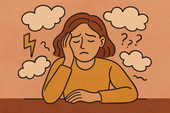
Brain Fog and Fatigue: How to Stop Blaming Yourself
Struggling with brain fog or chronic fatigue? You’re not lazy or failing. Learn how to stop blaming yourself for symptoms caused by MS or chronic illness, and start embracing a more compassionate path to healing and self-understanding.
-
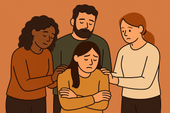
Creating an Emotional Support Team You Actually Trust
Tired of feeling unsupported or misunderstood? Learn how to build an emotional support team you actually trust—with people who see you, hold space for you, and respect your boundaries, especially when living with MS or chronic illness.
-
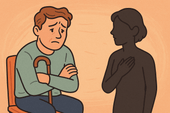
MS, Vulnerability, and the Fear of Being Seen
Living with MS can make vulnerability feel unsafe. Learn why so many people with MS hide their struggles—and how to gently move toward authenticity, self-acceptance, and deeper connection without shame.
-
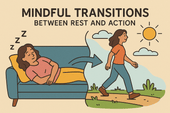
Mindful Transitions Between Rest and Action
Struggling to shift between rest and activity without guilt or overwhelm? This guide offers gentle, mindful strategies to make transitions feel more natural, intentional, and supportive of your nervous system.
-
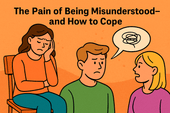
The Pain of Being Misunderstood—And How to Cope
Feeling the sting of being misunderstood? Learn why it hurts so deeply and discover practical, healing strategies to protect your truth, communicate clearly, and rebuild emotional safety when others just don’t get it.
-
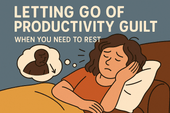
Letting Go of Productivity Guilt When You Need to Rest
Struggling with guilt every time you try to rest? Learn how to release productivity shame, understand why rest matters, and embrace a more compassionate rhythm for healing and recovery—without feeling lazy.
-
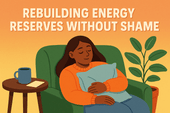
Rebuilding Energy Reserves Without Shame
-

What to Do If You Feel Emotionally Invalidated by Doctors
Feeling emotionally invalidated by your doctor can be deeply distressing. Learn how to recognize medical gaslighting, validate your own experience, and advocate for better care when you’re not being heard.
-
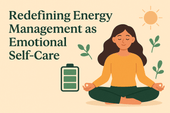
Redefining Energy Management as Emotional Self-Care
Energy isn’t just physical—it’s emotional. Learn how redefining energy management as emotional self-care can help you protect your peace, support your nervous system, and live more in tune with your true needs.
-
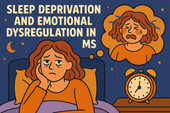
Sleep Deprivation and Emotional Dysregulation in MS
-
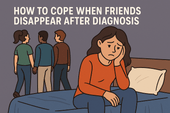
How to Cope When Friends Disappear After Diagnosis
Losing friends after a diagnosis can feel like another kind of grief. Discover why some friends disappear—and how to cope with the emotional fallout while building more supportive relationships.
-

How to Talk to Your Kids About MS Without Overwhelming Them
Struggling with how to explain MS to your kids? Learn how to talk to children of all ages about multiple sclerosis with honesty, clarity, and emotional safety—without overwhelming them.
-
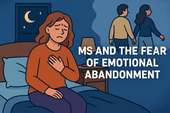
MS and the Fear of Emotional Abandonment
The fear of emotional abandonment is common for people with MS. This article explores why it happens, how it impacts your relationships, and how to create emotional safety and healing.
-
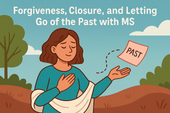
Forgiveness, Closure, and Letting Go of the Past with MS
Living with MS often brings emotional wounds from the past. Learn how forgiveness, closure, and letting go can help you heal emotionally—and reclaim peace in the present.
-
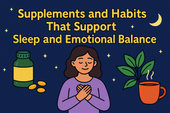
Supplements and Habits That Support Sleep and Emotional Balance
Struggling with poor sleep and emotional ups and downs? Discover calming supplements and daily habits that support deep rest and mental well-being—backed by science and easy to implement.
-
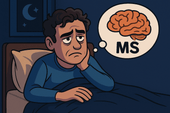
When Insomnia Feels Like Your MS Brain Won’t Turn Off
Struggling to sleep with MS? When your brain won’t shut off at night, insomnia feels relentless. Learn what causes it—and discover science-backed strategies to calm your mind and finally rest.
-

The Emotional Toll of Waking Up Tired Every Day: Why It Hurts More Than You Think
Waking up tired every day takes a deep emotional toll—from mood swings to lost motivation and self-doubt. Learn why chronic fatigue hurts more than you think and how to gently reclaim your mornings.
-
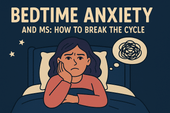
Bedtime Anxiety and MS: How to Break the Cycle
Bedtime anxiety is a common struggle for people with MS—and it’s more than just racing thoughts. Learn how MS-related stress, nervous system dysregulation, and fear of symptoms can create a cycle of sleeplessness, and discover practical, calming strategies to finally reclaim restful nights.
-
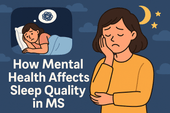
How Mental Health Affects Sleep Quality in MS: Breaking the Cycle of Fatigue and Emotional Distress
Struggling to sleep when you have MS? Discover how anxiety, depression, and neurological changes impact your rest—and what you can do to reclaim it. From CBT-I and calming supplements to lifestyle tips that support both mental health and sleep, this guide offers practical strategies for better nights.
-

Learning to Love Your Life (Even When It’s Not What You Expected)
Your life may not look how you imagined—but it’s still worth loving. Learn how to find peace, purpose, and joy in the unexpected.
-
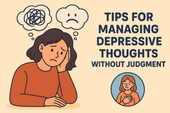
Tips for Managing Depressive Thoughts Without Judgment
Learn how to meet depressive thoughts with compassion, not shame. These gentle, research-backed tools help you manage low moods without self-judgment.
-
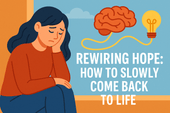
Rewiring Hope: How to Slowly Come Back to Life
Feeling emotionally numb or disconnected? Learn how to gently rebuild hope, one small sensory step and spark of life at a time.
-
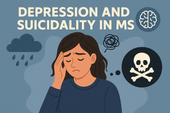
Depression and Suicidality in MS: A Conversation That Needs to Happen
Depression and suicidality in MS are real—and urgent. Learn why we must talk about it, how to spot warning signs, and where to find help and hope.
-
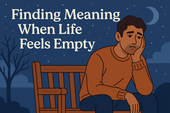
Finding Meaning When Life Feels Empty
Feeling disconnected or numb? Discover gentle ways to find meaning again—even in emptiness—through daily rituals, reflection, and purpose.
-
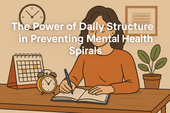
The Power of Daily Structure in Preventing Mental Health Spirals
Daily structure can prevent mental health spirals by creating safety, routine, and self-trust—especially for those with MS, depression, or anxiety.
-

Healing from Emotional Flatness with Sensory Rituals
Feeling emotionally numb or disconnected? Discover how sensory rituals can gently restore pleasure, presence, and emotional resilience.
-
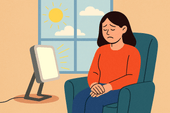
The Role of Light Therapy for Seasonal Depression and MS
Can light therapy ease seasonal depression in people with MS? Discover the science, benefits, and how to use it safely for better mood and energy.
-
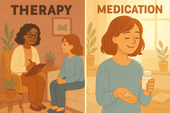
Medication vs Therapy: Treating MS-Related Depression Effectively
Explore whether therapy, medication, or both are best for treating MS-related depression. Understand what works, when—and why combination care is often ideal.
-
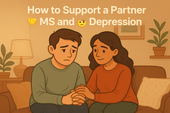
How to Support a Partner with MS and Depression
Learn how to support a partner living with MS and depression—practical tips, emotional tools, and ways to protect your own mental health too.
-
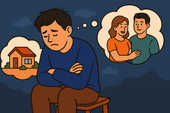
The Emotional Cost of Losing Your Old Life
Losing your old life to MS isn’t just about physical symptoms—it’s about grieving the identity, dreams, and freedom you once had. This article explores the emotional toll of invisible grief and how to begin healing without denying the pain.
-
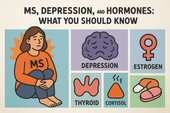
MS, Depression, and Hormones: What You Should Know
MS-related depression isn’t always just emotional—it can be hormonal. Discover how thyroid, sex, and stress hormones influence mood in MS, why women may feel worse during PMS or menopause, and what signs to look for when hormones may be driving emotional instability.
-
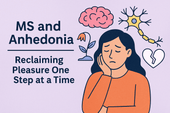
MS and Anhedonia: Reclaiming Pleasure One Step at a Time
Anhedonia—feeling emotionally flat or disconnected—is a common but misunderstood symptom of MS depression. This article explores how neuroinflammation, dopamine disruption, and fatigue can dull your sense of joy—and how small, gentle steps can help you begin to feel again.
-
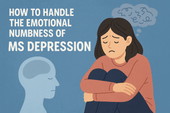
How to Handle the Emotional Numbness of MS Depression
Emotional numbness in MS depression doesn’t always look like sadness—it can feel like nothing at all. Learn why this disconnection happens, how it's tied to neuroinflammation and nervous system overload, and discover science-backed strategies to gently reconnect with your emotions.
-
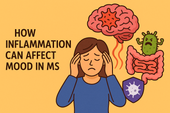
How Inflammation Can Affect Mood in MS
Mood swings and emotional numbness in MS aren’t just psychological—they can be driven by immune system inflammation. This article explores how inflammatory cytokines affect the brain, why mood changes are often biological, and what you can do to calm your nervous system from the inside out.
-
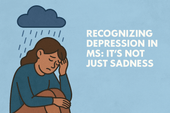
Recognizing Depression in MS: It's Not Just Sadness
Depression in multiple sclerosis (MS) is more than just sadness—it can be a neurological symptom, a side effect of inflammation, or a silent weight that masks itself as fatigue or emotional numbness. This article helps you recognize the hidden signs of MS-related depression, understand the science behind it, and explore real treatment options that support both mental and physical health.
-

Is Cryotherapy Safe for MS? Pros, Cons, and How It Compares to Cold Plunges
Cryotherapy promises quick recovery, inflammation reduction, and mood support—but is it safe for people with MS? This article breaks down the science, risks, and real-life benefits of cryotherapy for multiple sclerosis. You’ll also learn how it compares to cold plunges and which option may be better for calming flares and regulating your nervous system.
-

Can Cold Plunges Help Reduce Inflammatory Flares in MS?
Flares in multiple sclerosis (MS) are often driven by inflammation—but what if cold water could help turn down the heat? This in-depth article explores how cold plunges may help reduce flare frequency and intensity in MS by calming the immune system, lowering pro-inflammatory cytokines, and regulating the nervous system. Learn how to safely use cold exposure as part of your MS recovery routine.
-
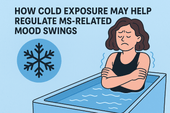
How Cold Exposure May Help Regulate MS-Related Mood Swings
Mood swings are a common but overlooked challenge in multiple sclerosis (MS). This article explores how cold exposure—like cold plunges and showers—may help regulate emotional ups and downs by calming the nervous system, reducing inflammation, and boosting mood-enhancing chemicals. Learn how to use this natural tool safely to support your mental and emotional resilience with MS.
-
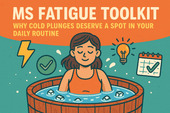
MS Fatigue Toolkit: Why Cold Plunges Deserve a Spot in Your Daily Routine
Fatigue is one of the most debilitating symptoms of multiple sclerosis (MS)—often invisible, misunderstood, and overwhelming. While no single tool can eliminate it, building a personalized fatigue management toolkit can make life more manageable. One surprising contender? Cold plunges. In this article, we explore why cold water immersion might be the refresh button your nervous system needs—and how to safely make it part of your MS fatigue routine.
-
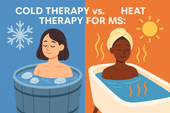
Cold Therapy vs. Heat Therapy for MS: Which One Helps More?
Managing multiple sclerosis (MS) often means navigating symptoms like fatigue, spasticity, pain, and nerve dysfunction. But when it comes to using temperature-based therapies, there’s a question many patients face: Should I be using cold or heat? In this in-depth guide, we explore the benefits, risks, and best use cases of cold therapy vs. heat therapy for MS.
-
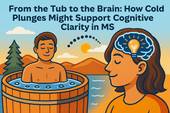
From the Tub to the Brain: How Cold Plunges Might Support Cognitive Clarity in MS
Cognitive fog is one of the most frustrating symptoms of multiple sclerosis (MS). But could cold plunges—those bracing dips into icy water—offer a surprising path to mental clarity? This article explores the emerging science behind cold exposure, brain function, and how a cold tub might help people with MS sharpen focus, lift brain fog, and reset their nervous system.
-
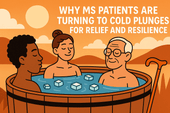
Why MS Patients Are Turning to Cold Plunges for Relief and Resilience
Cold plunges are no longer just for elite athletes and wellness influencers. A growing number of people with multiple sclerosis (MS) are turning to cold water immersion to ease symptoms, build nervous system resilience, and find calm in the chaos of chronic illness. This article explores why—and how—you might want to give it a try.
-
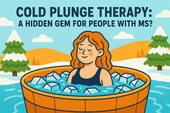
Cold Plunge Therapy: A Hidden Gem for People with MS?
Cold plunge therapy—once the domain of elite athletes and biohackers—is gaining attention among people with multiple sclerosis (MS). Could it help reduce inflammation, calm the nervous system, and ease MS symptoms like fatigue and spasticity? In this article, we dive deep into the science, benefits, safety, and practical application of cold plunges for MS recovery and symptom relief.
-
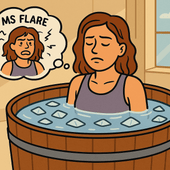
Finding Relief in the Midst of a Flare
MS flares can leave you feeling overwhelmed, exhausted, and mentally foggy. Cold water therapy is emerging as a promising tool to help reset the body and mind after a flare. This article explores how cold exposure supports recovery, calms the nervous system, and can be safely added to your daily routine.
-
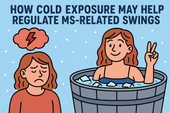
How Cold Exposure May Help Regulate MS-Related Mood Swings
Mood swings in multiple sclerosis (MS) can feel like emotional whiplash—one moment calm, the next overwhelmed, angry, or hopeless. While medications and therapy help, many people with MS are exploring natural strategies to support emotional balance. One surprising tool gaining attention? Cold exposure. In this article, we explore how cold plunges and other forms of cold therapy may regulate the nervous system, stabilize mood, and offer emotional relief for people with MS.
-
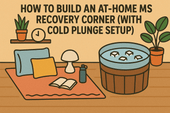
How to Build an At-Home MS Recovery Corner (with Cold Plunge Setup)
Create your personal MS recovery oasis at home—complete with a cold plunge setup. Learn how to design a space that supports healing, reduces inflammation, and helps you manage symptoms naturally.
-
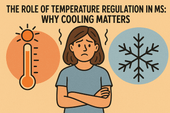
The Role of Temperature Regulation in MS: Why Cooling Matters

















































